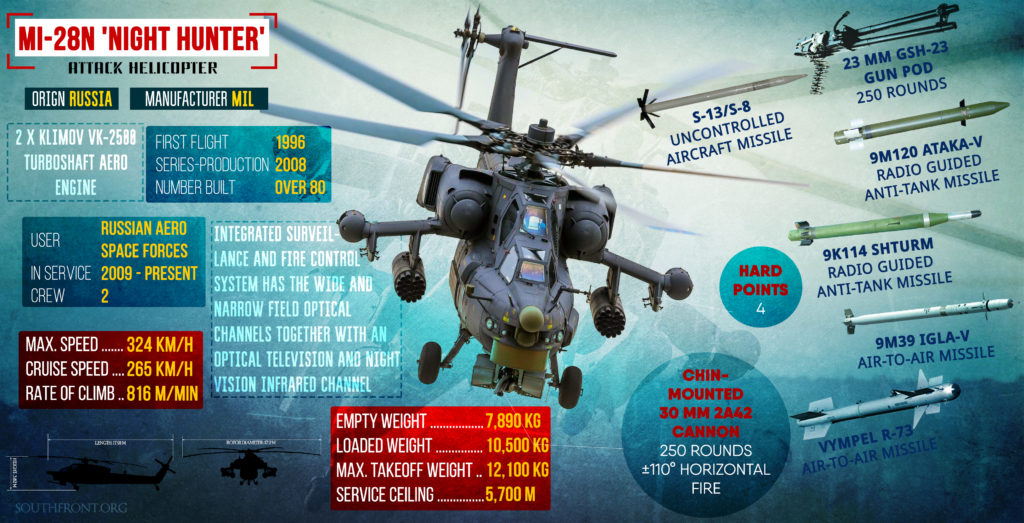Chairman of Committee on Defense and Security of the Russian Federation Council and former Commander of the Russian Aerospace Forces Viktor Bondarev evaluated the upgrades of the Mi-28 helicopters.
“Mi-28s were improved thanks to Syria. Well, [the pilots] say that some things became better, but not all things — the electronics are severely lacking: pilots can’t see, pilots can’t hear a thing. The pilots call the goggles they wear “pilot’s death”. If the sky is clear, then it’s fine. If there’s some smoke, then you get red eyes for three days,” the senator said.
Bondarev voiced these criticisms at a hearing regarding the military-industrial complex and military trade laws as a reaction to the industry’s complaints of insufficient support to experimental developments.
The Mi-28 is an all-weather, day-night, military tandem, two-seat anti-armor attack helicopter. It carries a single gun, plus external loads carried on pylons beneath stub wings.
In April of 2016 a Russian Mi-28N crashed in Syria with two pilots dead. It was not shot down, the main reason for the crash was cited as unfavorable flight conditions, as the helicopter was flying during a dark night over complex terrain.






